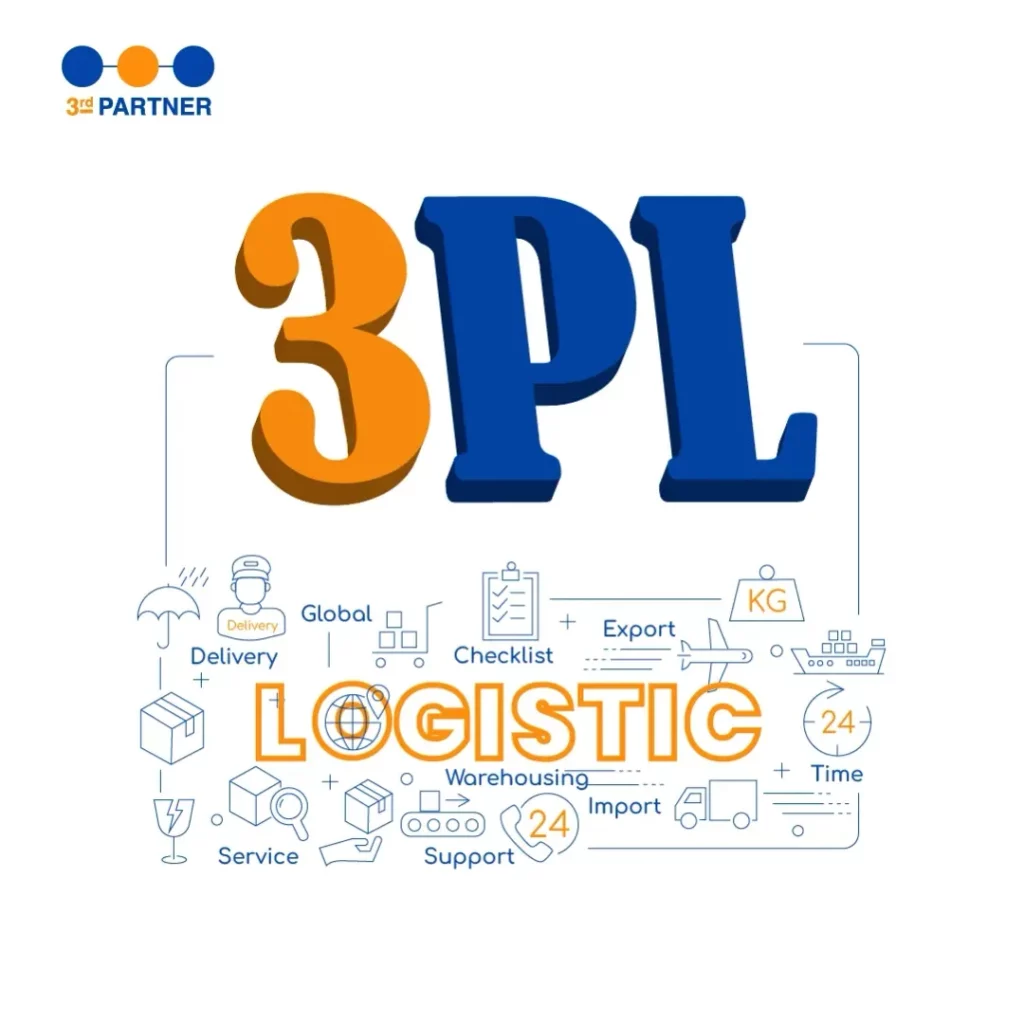Are you seriously considering entering the world of e-commerce ? With the increasing demand for e-commerce, the challenge of achieving success also increases, so if you are planning to launch in this field, you must know the important basic steps that must be taken before starting, and in this article, we will learn together about these steps, in addition to the challenges and reasons for the success of the trade Electronic , let us begin the journey of success in electronic commerce .
The first step: understand the e-commerce system
The e-commerce system refers to the method by which products and services are bought and sold over the Internet, and this industry operates through e-commerce platforms , where products and services are presented and the buying and selling process is facilitated for customers.
The e- commerce system includes various processes that include product advertising, inventory management, payment and shipping, and customer service .
For example, the Amazon platform is an ideal model for the e-commerce system, as it provides users with searching for various products and services, then adding them to the shopping cart, and paying for them via various electronic payment methods, and Amazon provides shipping services to users, in addition to after-sales services and customer service to achieve Convenient and easy shopping experience.
The second step: types of e-commerce
E-commerce is divided into four main types, and one of the important steps before starting to work in this industry is to understand each type of electronic commerce , for easy identification and study of the type in which you will work, and these types are:
Retail e-commerce (B2C)
This industry targets the end consumers directly, as products and services are displayed through websites and consumers can buy online, an example of this is the “Amazon” website, which offers many products to end consumers.
Wholesale e-commerce (B2B)
This industry targets companies and businesses and is represented in the buying and selling of products and services between companies via the Internet. An example of this is the “Alibaba” website, which is a global platform for e-commerce between companies.
E-commerce (C2C)
This industry is the exchange of goods and services between individuals over the Internet, and this can be done through online buying and selling platforms that allow individuals to offer the goods or services that they want to sell to the general public, and cash and delivery usually take place personally between the seller and the buyer, and an example On top of that is eBay which allows people to view and buy goods between each other on the online platform.
E-commerce (C2B)
It is an e-commerce model that includes buying and selling between individuals and companies. It allows individuals and companies to sell their products and services. For example, someone can design a logo for a company and offer it for sale on electronic design websites. Companies can choose the best logo and get it instead of hiring a designer. Upwork is an example of a C2B platform.
As for the types of companies operating in the field of e-commerce, they can be divided into three main sections as follows:
- Physical commodity companies: These companies depend on selling physical products such as clothing, furniture, food, and other products that the consumer can obtain anywhere in the world once the purchase is completed, such as what happens on the Amazon and Noon platform.
- Service companies: These companies depend on selling the services you need on the Internet. An example of this type of company is SaaS for business, as this platform provides software in the form of services that have subscription and monthly and annual payment plans.
- Digital product companies: These companies rely on selling digital products such as e-books, training courses, and other products online.
Step three: planning and preparation
The planning and preparation step is the basis on which the process of entering the world of e-commerce must be based , and it is the step in which the goals, resources and partners necessary to achieve these goals are defined. You must do the following in this step:
- Determine the main goal of the process of entering the world of e-commerce , do you want to sell your own products or services, or act as an intermediary for products and services provided by other parties?
- Determine the resources you will need to achieve your goals, such as labor, money, time, informational and marketing materials, and technology.
- Search and identify potential partners, such as logistics service providers, software providers, websites, banks and electronic payments, who will help you achieve your goals and succeed in the world of e-commerce.
- Preparing a clear and well-prepared action plan that includes clear and specific steps to achieve the set goals, and specifying the financial and time resources required to implement these steps.
Step 4: Choose the right e-commerce platform
Choosing the appropriate electronic platform is one of the most important steps for entering the world of e-commerce . The platform is the virtual space in which you will display your products and allow customers to access and purchase them. Therefore, the platform must be chosen carefully and the advantages and disadvantages of each should be studied, such as: ease of use, hosting cost and additional services. Introduction, security and protection requirements, and integration with payment methods and shipping services.
There are several options for choosing the appropriate platform, such as building your own website using website building tools or using ready-made e-commerce platforms, such as Shopify, WooCommerce, etc., and you must choose the platform that is commensurate with the size of your business and commercial activities and provides the features you need to run your business efficiently and easily.
Fifth step: e-commerce challenges
You must be aware of each of the e-commerce challenges that you may face in this industry in order to avoid problems and losses and to be able to compete with high quality, such as:
- Cybersecurity: Hackers can exploit security vulnerabilities and cause theft of customer data and personal information.
- Shipping and Delivery: Delivery and shipping are major challenges facing e-commerce, as online stores must provide fast and reliable delivery services.
- Competition: Online stores face strong competition, which requires them to devise effective marketing strategies to attract customers.
- Technological change: E-commerce requires keeping pace with rapid technological developments and investing in new technologies to improve the online shopping experience for customers.
- Laws and regulations: Online stores must comply with laws and regulations related to e-commerce, such as consumer protection and personal data protection.
Fifth step: laws and regulations
You must understand the regulations and laws that contribute to the success of e-commerce as an essential step before entering this industry, as e-stores are obligated to abide by laws and regulations related to e-commerce to protect consumers’ rights and preserve their reputation and commercial success, and they must provide clear and transparent policies to consumers, such as return and return policy , and the protection of personal data of consumers and customers.
It must also take into account local and international regulations to ensure compliance and avoid any legal or financial risks, in addition, it must take care of cyber security to protect payment data and personal information of customers.
Reasons for the success of e-commerce
Why is e-commerce developing and succeeding so quickly? This question revolves in the minds of many, and the reason lies in the reasons for the success of electronic commerce , and these reasons are:
Easy access
One of the most important reasons for the success of e-commerce is its ease of access, as anyone anywhere in the world can access e-commerce platforms via the Internet, thanks to the expansion of the Internet and the high percentage of use of smart phones and tablets, and this provides great opportunities for e-commerce to increase the scope of distribution its products and services worldwide, which facilitates the shopping process for consumers and helps increase sales and achieve profits.
And thanks to the ease of access to electronic platforms, consumers are able to access offers, products and services easily and easily, without the need to go to stores and commercial centers, which saves them time, effort and money, and this helps to enhance satisfaction and loyalty among consumers and increase the opportunity to obtain more customers. .
Low cost
One of the main factors that help the success of e-commerce is the low cost. In the past, large companies needed the funds and resources to set up stores in different locations and appoint a large number of employees to manage these stores, but with e-commerce anyone can create a simple online store. And at a much lower cost than setting up shop in the physical location.
Other lower costs in e-commerce include saving the additional costs of physical stores, such as rent, insurance, maintenance, operation, decoration, staff and supplies, and this allows companies to offer competitive prices and get more customers.
In addition, businesses can get digital resources and tools at a low cost as well, such as web hosting, design software, and digital marketing, which helps lower overall e-commerce costs.
Customer retention
Customer retention is among the main reasons that make e-commerce successful. In the world of e-commerce, customers can easily access many options, and they can shop from home without having to go out to shop in traditional stores.
Therefore, companies working in the field of e-commerce must work to retain their customers by providing excellent customer service and a comfortable and satisfying shopping experience, and this can be achieved by providing easy-to-use and flexible user interfaces, providing flexible and various payment options, and providing fast and reliable shipping services, And provide attractive offers and discounts to customers.
Companies must also work to build trust with customers by providing complete and transparent information about the products and services offered, and providing quality guarantees and easy and flexible return and exchange policies, and thus it is possible to maintain customers and increase their level of loyalty, and thus increase sales and achieve success in the world of e- commerce .
data analysis
Data analysis is one of the main reasons for the success of e-commerce , as e-merchants possess a large amount of data about their customers and their behavior, and this data can be used to analyze trends and patterns and improve sales and marketing operations.
By analyzing data, online stores can know which products are most popular and least in demand, and identify changes that can be made to increase sales. Data can also be used to analyze customer behavior and better target them, and determine the best ways to reach customers and attract them to the site, thus increasing revenues and improving profits. And improve the shopping experience for customers, and thus increase customer satisfaction and retention.
Global expansion
One of the primary factors that helped the success of e-commerce is the ability to expand globally faster and more effectively than was previously possible in traditional commerce. Instead of relying on traditional channels to expand abroad, online stores can easily reach customers around the world by Internet.
In addition, e-commerce allows small and medium-sized companies to reach customers in global markets without the need to invest in travel expenses, geographic distribution, and traditional marketing, thus presenting their products and services to a wider audience, increasing revenues, and achieving faster growth.
quick reply
A quick response is one of the most important reasons for the success of e-commerce . Although communications and interactions in e-commerce take place remotely, customers expect a quick and effective response to their inquiries and problems. Modern technology allows for immediate communication options such as live chat, e-mail, phone calls, and SMS messages. This allows e-stores to respond quickly to any inquiry or problem that customers may encounter. Thus, this service works to achieve customer satisfaction, increase chances of obtaining sales, and increase customer loyalty.
creativity and innovation
Creativity and innovation are among the factors that cause the success of e-commerce . Emerging e-companies that innovate and create unique solutions can attract the attention of consumers and achieve great success. For example, e-commerce companies can innovate in the areas of marketing, delivery, user experience, customer service, and electronic payment.
Innovation in the field of marketing through the use of artificial intelligence techniques and data analysis to understand consumer preferences and create targeted marketing campaigns. Innovation in the field of delivery can also be achieved through the use of modern technology such as drones and smart cars to deliver goods quickly and effectively.
Reasons for the failure of e-commerce
Many online stores succeed, fail and lose many stores in this ever-evolving industry, due to the following reasons:
Poor planning
Poor planning and lack of a clear strategy are among the most common causes of e-commerce failure, because e-commerce requires a comprehensive, well-defined plan to succeed, from identifying the right products and target segment to pricing, marketing, website design, payment platforms, and customer service.
Poor user experience
Poor design and user experience can be one of the reasons for the failure of online stores, as consumers expect the online shopping experience to be easy, convenient and efficient, and if online stores or applications are difficult to use or unreliable, this will greatly reduce the possibility of attracting and keeping customers.
The design of the e-commerce user interface requires compatibility, flexibility and simplicity, and the pages must be fast loading, well organized and easily accessible, and the pages must also be easy to read and contain clear information about the products or services offered, and the payment options must be flexible, secure and provide Good technical support to solve any problems or inquiries.
Lack of reliability and security
Lack of reliability and security is another factor that can lead to the failure of e-commerce, and the great success of e-commerce depends on the trust that consumers feel in online stores and the data that is being circulated, and if the site is not secure or has security problems, then consumers may hesitate to deal with it And they prefer to look for a safe alternative.
Lack of reliability and security can be due to many reasons, including lack of adequate data protection, lack of secure payment methods, and lack of internal processes and procedures to protect against fraud and hacking.
Incompatibility with legal systems and regulations
Incompatibility with legal systems and regulations is one of the main and well-known reasons that lead to the failure of e-commerce , so e-stores must adhere to laws and regulations related to e-commerce, such as consumer protection, protection of personal data, protection of intellectual property, dealing with taxes and customs, and other matters related to legislation. government.
In the event of non-compliance with these laws and regulations, the online store may face legal penalties and loss of trust from consumers and business partners, and this may lead to loss of customers and lower level of revenue.
Not marketing and promoting well
Not marketing and promoting well is another reason for the failure of e-commerce . If the online store cannot reach its potential customers sufficiently, it will not be able to achieve expected sales. Among the reasons for not promoting well is not developing a good marketing plan or the inability to analyze Consumer behavior and adapting to it, and this may lead to the loss of available investment opportunities.
For example, if an online store has an ineffective or improperly targeted marketing campaign, potential customers may turn to competitors who better promote their products. In addition, not providing a satisfactory marketing experience to customers can lead to a loss of brand confidence and drive away. This leads to the failure of the online store to attract and retain customers.
Lack of interest in customer service
Customer experience is an essential part of the success of any business, and attention to customer service is one of the critical factors in the success of e-commerce , and online stores must provide high-quality customer service and a quick response to any complaint or question received from customers.
In the event that good customer service is not provided, this can lead to a decline in customer confidence and the search for other competitors. Moreover, the lack of focus on customer service can lead to the spread of negative evaluations and opinions on the Internet, which affects the store’s reputation and reduces the chances of success. In the future.
In conclusion, e-commerce has become one of the fastest and best ways for merchants and consumers to transact business, as this industry provides ease and convenience for consumers and an opportunity for merchants to increase the number of their customers and sales. However, the success of e-commerce requires good planning, effective implementation, providing a smooth and safe experience for users, in addition to adhering to laws. regulations and provide excellent customer service.







